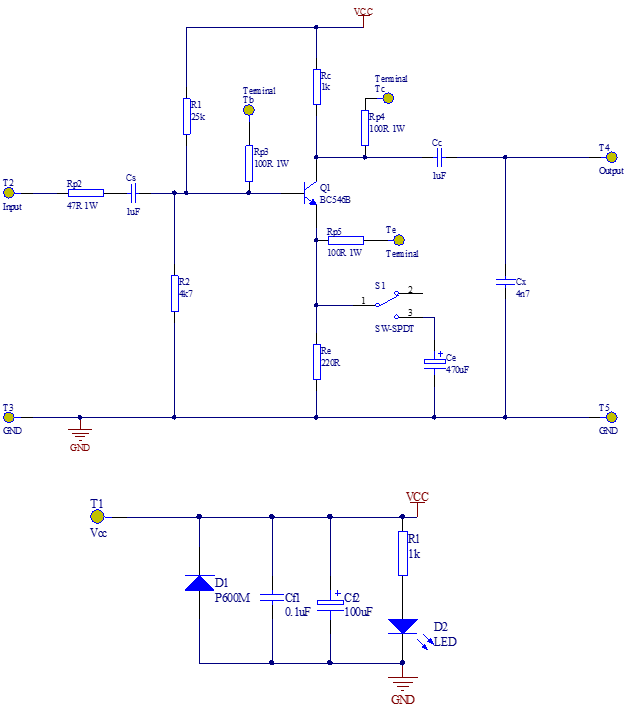Reference no: EM131819

EXPERIMENT
Use the transistor board provided
DC Analysis
A1) Connect a 15 volt supply to VCC and ground and accurately set the supply using the multimeter.
A2) Using a DMM measure the DC voltages on VB , VC and VE.
A3) Repeat these measurements using the oscilloscope.
A4) Using the mathematical analysis as described in Malvino calculate the expected DC values.
A5) Compare your measured and calculated results.
AC Analysis Gain at Midband (with bypass capacitor in circuit)
B1) Connect the bypass capacitor using the switch.
B2) Connect a signal generator to the input of the amplifier.
B3) Set the frequency of the generator to 20mV pk to pk and 1 kHz.
B4) Using the oscilloscope and two channels (channel 1 on output of signal generator, and the second channel on the waveform to be measured, sketch the waveforms at Vb, Ve, Vc and Vout and note the DC and AC values that appear there.
B5) What is the voltage gain of this circuit (Av)?
B6) Analyse this circuit using the AC models described in Malvino.
B7) Compare the theoretical and measured values.
B8) Explain why there is a phase shift between Vin and Vout.
AC Analysis Gain at Midband (with no bypass capacitor in circuit)
C1) Disconnect the bypass capacitor using the switch
C2) Connect a signal generator to the input of the amplifier
C3) Set the frequency of the generator to 20 mV pk to pk and 1 kHz
C4) Using the oscilloscope and two channels (channel 1 on output of signal generator, and the second channel on the waveform to be
measured, sketch the waveforms at Vb, Ve, Vc and Vout and note the DC and AC values that appear there.
C5) What is the voltage gain of this circuit (Av)?
C6) Analyse this circuit using the AC models described in Malvino.
C7) Compare the theoretical and measured values.